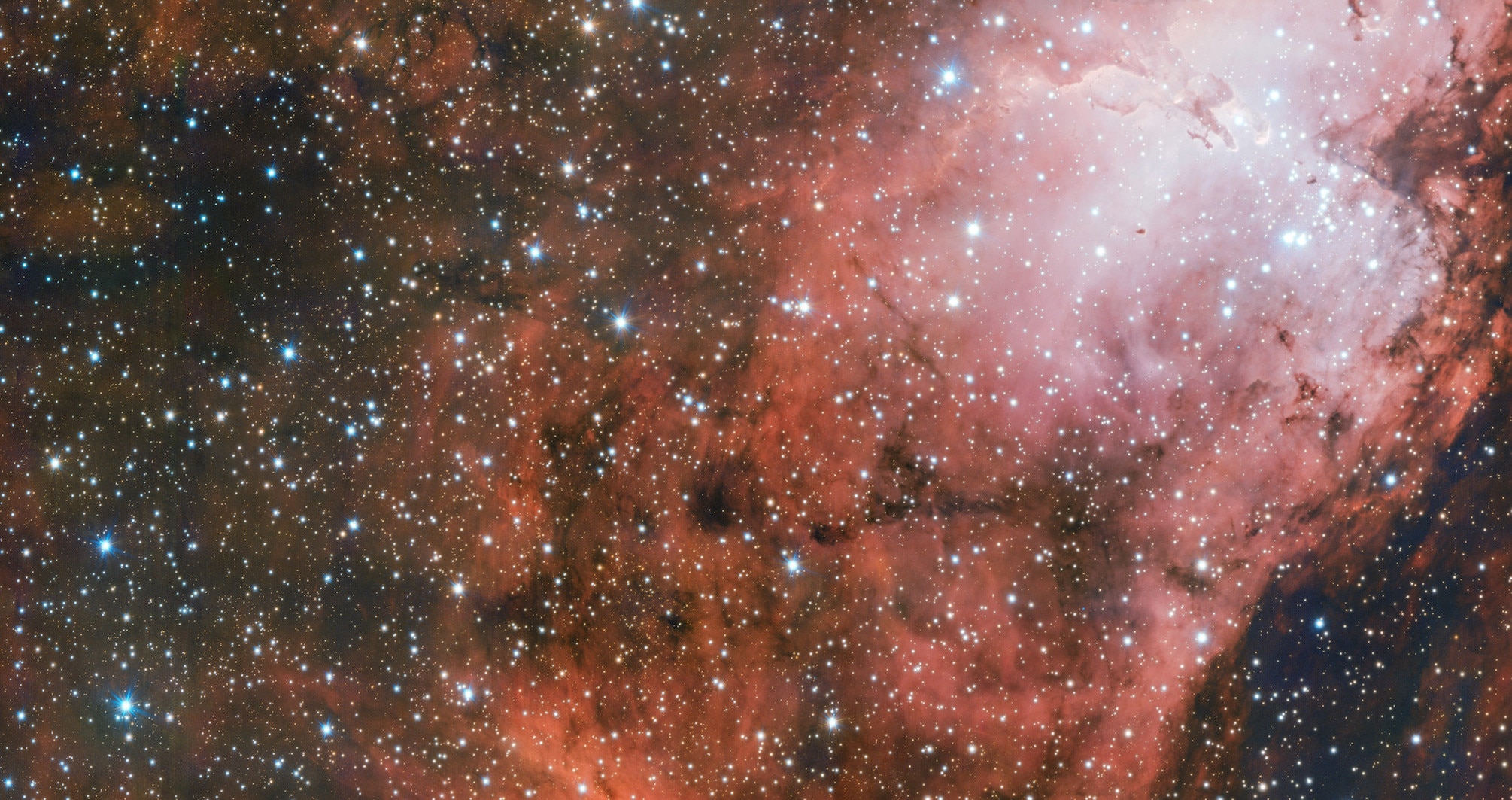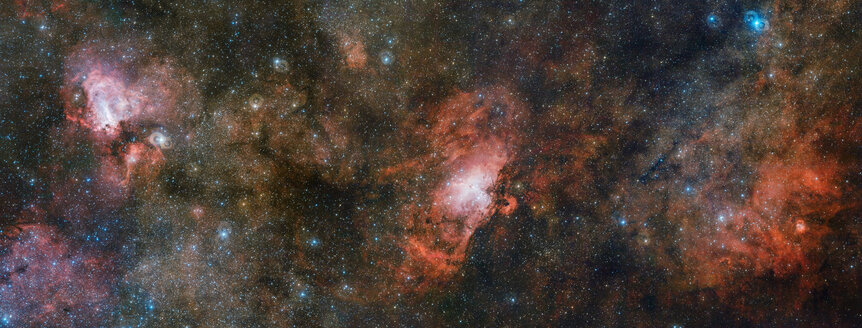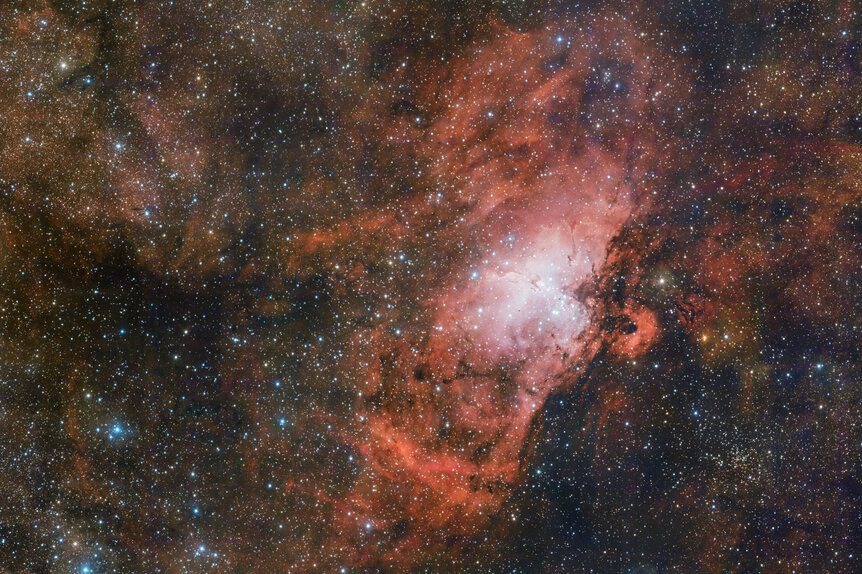Create a free profile to get unlimited access to exclusive videos, sweepstakes, and more!
A *ridiculously* huge image of spectacular star birth

Look, I've seen a lot, OK? Globular clusters splayed across my screen, hundreds of thousands of stars sparkling. Galaxies so far away their distance crushes our sensibilities but still detailed enough to make an astronomer weep. Planets up close, worlds upon worlds, textured and varied.
So it takes a lot to make me sit back and go, "Oooof."
Oooof.That stunning image shows three vast star-forming regions: the Omega Nebula (also called the Swan Nebula, if you see it upside down) on the left, the Eagle in the middle, and Sharpless 2-54 on the right. Each of these is a huge cloud of gas and dust, churning away to birth stars like queen bees in their hives.
But I need to describe the image itself for a moment. It's a mosaic using images taken by the European Southern Observatory's Very Large Telescope Survey Telescope equipped with the 256 megapixel OmegaCam. Dozens of images were stitched together to make the final product… a 3.3 billion pixel map of the sky.
It's gorgeous, isn't it? And this is a small, small version of it. The full-res JPG is 65,500 pixels wide, and it checks in at 1.3 gigabytes, so have fun. They also have the ridiculously huge original 93,000 pixel wide 3.3 billion pixel version, and that weighs in at 9.2 GB (in PSB format), if you want to choke your connection for the next few hours.
YeGADS.
Even the 13,000 pixel image I downloaded is enough to show incredible detail. Here's the Eagle Nebula isolated for your perusal:
I've observed this nebula many times through my own telescope, but c'mon. Hubble made this nebula famous with the "Pillars of Creation", and you can see them just to the right of center, angled down to the lower right. But they're essentially lost in the middle of this maelstrom of gas, dust, newly formed stars, shock waves, and just background stars.
One thing that stood out to me is how you can see lots of background stars on the left, but just to the right of the nebula the sky gets much darker, and the star counts drops abruptly. That's because there's a giant molecular cloud there, a vast, dense, cold collection of dust and gas that doesn't glow, so it blocks light from stars behind it. The bright gas everywhere is made of hydrogen atoms heated by the young luminous stars in the Eagle, but the dark cloud is so cold atoms of hydrogen are still bound together to make H2, a hydrogen molecule. Some clouds like that are only a few degrees above absolute zero inside.
That picture shows a half dozen highlights of the big mosaic, including some dark snaking dust clouds, dense star-forming regions, star clusters, and shock fronts where denser material is being blasted away by the powerful energy emitted by nearby stars. And, not to bore you with repeating myself, but even this is just a crop of the larger image that shows 12 of these highlights. I just can't fit them in the blog reasonably sized for you to see. Go to the original to get the big stuff.
Images like this slay me. I have spent quite some time at the eyepiece ogling both the Eagle and the Omega (in fact, once you see it as the Swan it's hard to see it otherwise; I've shown it to many people and it's fun to hear them exclaim out loud once they see the swan shape to it), but it's not possible to see them like this. Not unless you have a 2.6-meter telescope equipped with a monster camera situated in phenomenally dark skies.
And yet… standing behind my 20-centimeter telescope, seeing these objects as faint and fuzzy, but still recognizable, there is a thrill. It's nothing like these images, sure, but I know that the photons hitting my eye have traveled over 7,000 light years. They started their journey when they were created as starlight slammed into hydrogen atoms, exciting them, then they flew across that unimaginable distance, ending in my retina.
Those photons came to me, directly. Images are cool, but yeah. There's nothing like that, either.
















